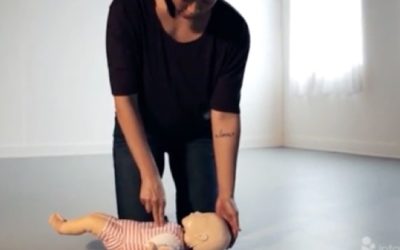Accredited CPR Classes
Purchase once, get lifetime access. Re-certify for free forever.
Courses for parents | 100% online | Any device
Trusted By Over 20,000 Families & Organizations







- Take online from any device at your own pace
- Learn CPR for an infant
- Choking relief for infants
- Repeatable demonstration videos
- Written curriculum
- 25-question exam
- Printable certificate
All Ages CPR Class

- Take online from any device at your own pace
- Learn CPR for all ages
- Choking relief for all ages
- All content from individual courses included
- 25-question exam
- Printable certificate

- Take online from any device at your own pace
- Learn Child CPR
- Choking relief for children
- Repeatable demonstration videos
- Written curriculum
- 25-question exam
- Printable certificate
Full Access - All Courses

- Best Deal - All courses from infantCPR.com for life
- All CPR Courses
- First Aid Course
- Child Sexual Abuse Prevention Course
- Re-certify for free forever
- Printable certificates
First Aid

- In depth instruction on 28 first aid topics
- 40 minute course.
- Tips from paramedics
- 30-question final exam
- Learn everything from nosebleeds to snakebites
- Printable certificate
Sexual Abuse Prevention

- 25 minute, video-based course with exam
- Spot the warning signs in children.
- How peer-to-peer abuse happens.
- Respond to a disclosure.
- How abusers target victims and groom.
Course Oversight Board
We take our course content very seriously. Because of this, we maintain a board of experts who review all of our training to ensure it’s constantly up-to-date and accurate.

Firefighter
Mike Brown

Firefighter, Paramedic
Joe Meier

CEO, Winged Hope
Jessica Nicely
get protected today
Why Online CPR Training?
Get lifetime access
Buy once, get lifetime access to your courses for reviewing and recertification. Renew your online CPR certifications every two years for free with infantcpr.com.
As parents, life’s crazy!
As parents ourselves, sometimes the smallest things, like grocery shopping, can seem overwhelming. We bring CPR training and other safety courses right to you.
It’s safe for you
Due to Covid-19, most in-person CPR courses are cancelled. But these skills have never been more important. Learn how to do CPR in the safety of your own home.
Check it off. Today.
Instead of scheduling a babysitter and adding another thing to your calendar, you can just check it off your list today. Simple as that.
Julie, Arizona
“Even with all the resources at an ER, proper CPR is by far the most important thing we do to save patients”
Tara, Washington
“Fast. Simple. CPR videos were super high quality. Felt like I learned it.”
Mateo, LA
“We’re first time parents and were worried about taking CPR during Covid. These courses were perfect.”
Cassandra, New York
“I took the sexual abuse course along with the CPR. I’m so glad I did. I wish it was a little longer.”
Jessica, Michigan
“Took the all ages course. Videos are great. Exactly what I expected.”
Jada, Florida
“Finished in 30 minutes and got a 90% on the exam. Did it on my phone.”
How It Works
Fast CPR & Choking Relief Certificates
- Sign up for a Class. Add additional courses during checkout.
- Complete the course material. Each course takes no longer than 40 minutes.
- Complete the exam. Take as many times as you need to achieve an 80% or better.
- Print or Save your certificate of completion.
What is the CPR Ratio for an Infant Child?
The proper ratio for chest compressions is 30 compressions for every 2 breaths. This should be done to the beat of the song “staying alive.”
When Can My Baby Sleep With A Blanket?
Covers age appropriate bedding, sleep sacks, swaddling, suffocation, and SIDS prevention techniques.
Is my baby too cold at night?
Covers the optimal temperature for your baby’s sleep. How to reduce risk of SIDS.
Training a Group?
We offer group discounts if you are training more than ten other people. Please contact us directly and let us know how many people need training and which online courses you need. A member of our team will be happy to discuss a group discount with you.

Board Certified
All of our courses have been approved and certified by our expert board of medical advisors and subject matter experts.

Secure Payments
We use Stripe for our payment processing. Stripe is an industry-leading payment processor that keeps your information secure.
![]()

Risk Free - Refunds
If you're not satisfied with your course, we'll refund your money no questions asked. Simply contact us to request your refund.
Infant CPR Steps - Reference for an Emergency
Here are the infant CPR steps at a quick glance. Please keep in mind that to responsibly learn CPR, you need to take the full class offered above. This is for your quick reference if you are experiencing an emergency.
Step 1: Check for responsiveness. Gently tap the infant’s foot or shoulder and yell. If the baby is unresponsive, move on to the next step and call 911 immediately.
Step 2: Give 30 chest compressions. Put the baby on a hard, flat surface. Take 2 fingers and find the center of the chest just below the imaginary line between the nipples. Push down 1/3 the thickness of the chest at a rate of 100/minute. The AHA recommends pushing to the beat of “staying alive” by the Bee Gees.
Step 3: Open the airway. Gently tilt the head back being careful to not tilt it too far.
Step 4: Give 2 breaths. Cover the mouth and the nose with your mouth, creating a seal, and give 2 gentle breaths, watching to see the chest rise and then release.
Step 5: Continue giving infant CPR until help arrives. CPR keeps blood flowing to the brain and other vital organs until advanced medical help can take over. Don’t give up!
Who should take these courses?
Our online CPR training and other safety courses are meant for everyone who cares for a child. We offer CPR courses specifically designed for parents, expectant parents, grandparents, family members, babysitters, teachers and nannies. They are designed for people without prior medical knowledge and are perfect for first time certifications or recertifications.
You can purchase as many courses as needed to help prepare yourself and others around you. We highly recommend purchasing courses for everyone in your support system as well. This includes your babysitter, your nanny, and anybody else who will be watching your children.
What will I learn in the CPR Class?
When you purchase one of our online CPR classes you are given access to an extensive training module. We designed the training to walk you through all of the steps to ensure that you know how to perform CPR on an infant, child, or on an adult.
First, you will watch the professionally produced training videos. The first video demonstrates proper CPR steps and the second video demonstrates proper choking relief technique. Then, you will read through the written curriculum. At the end of each chapter you are given one question about the material. This is to help you prepare of the exam at the end of the training module.
From start to finish, we estimate that it will take you 45 minutes to 1.5 hours to complete the full training including the test. If you have further questions as to what is included in these courses, please contact us.
Here are the titles of the chapters in the written curriculum. These topics are included in all of our classes:
-
Introduction to CPR: Gives a brief introduction to CPR and what you will learn in the module.
-
Anatomy of CPR: Gives an overview of CPR from a biological perspective. This section will help you understand what is actually happening when you give chest compressions and rescue breaths.
-
Common Myths: We identify and debunk common misconceptions about CPR to help prepare you for the reality of an emergency.
-
Mental Preparation: Most people don’t perform these skills on a regular basis. As such, being mentally ready to handle a crisis is of utmost importance. In this section we give you some exercises to help prepare you mentally.
-
Secure the Scene: You will learn how to determine whether or not an emergency scene is safe before you begin rescue attempts.
-
Determine if CPR is Needed: Giving CPR to a somebody who doesn’t need it can result in disaster. In this section, you will learn about the signs and symptoms of a victim who actually needs cardiopulmonary resuscitation.
-
Check for Responsiveness: In this section, you will learn how to check if a victim is responsive to stimulus or not.
-
Get Help: One of the most important parts of an emergency rescue is getting advanced medial help on the scene as soon as possible. You will learn how to get 911 to the scene while still giving the victim the best chance of survival.
-
Chest Compressions: The central component to cardiopulmonary resuscitation is chest compressions. Learn how to give high-quality chest compressions to keep the blood flowing through the body. You’ll learn the ratio of chest compressions to rescue breaths.
-
Hands Only CPR: Recently, studies have shown that performing CPR only using chest compressions is extremely effective. Learn how to perform hands only CPR on older children and adults.
-
Rescue Breaths: Rescue breathing helps give oxygen to the blood that you are pumping through the body with chest compressions. Learn how to give effective rescue breaths.
-
Putting it Together: In this portion, you will learn how to put all of the individual CPR steps together into a cohesive process.
-
Introduction to Choking Relief: This is a brief introduction to the choking relief training module.
-
Anatomy of Choking Relief: Learn about the physiological aspects of back blows and the Heimlich maneuver. You will learn how both of these techniques are manual attempts to simulate a forceful cough.
-
Recognize a Choking Victim: People often think somebody is choking when he or she really is not choking. Learn the signs of a victim who is truly choking.
-
Choking Relief Instruction: In this section you will study step-by-step instructions on how to give back blows for small babies and little children. You will learn the Heimlich maneuver for older children and adults.
-
Common Choking Objects: The final section covers a variety of common household choking objects to be wary of.
What topics are in the first aid class?
Our online first aid course is thorough and includes all of the first aid topics that you are most likely to encounter with children in a home or classroom setting. Here is a list of the topics:
Cuts and Scrapes: How to treat a minor cut or a scrape so it doesn’t get infected.
Bruises: How to best care for a bruise and when to know if a bruise is serious enough to seek medical attention.
Anaphylaxis: Anaphylaxis is a serious, life-threatening allergic reaction. We’ll show what to look for, common causes, and what to do, including how to administer an EpiPen.
Seizures: Seizures can be scary for everyone involved. You’ll learn how to help somebody who is experiencing a seizure.
Fainting: Fainting is our brain’s way of rebooting. We’ll help you understand what to do if somebody faints and when you should seek medical attention.
Dislocations: Dislocations are painful. We’ll show you how to treat a dislocation so it heals quickly.
Sprains: Learn how to deal with a sprain using the acronym RICE, which stands for Rest, Ice, Compress, Elevate.
Electric Shock: Electric shock can be minor or serious. We’ll show you how to tell the difference, as well as what to do in a serious situation.
Nosebleeds: Everyone gets nosebleeds, but there is a lot of misinformation out there on how to treat them. We’ll show you what medical professionals do.
Animal and Human bites: Bites can carry bacteria and can also vary greatly in severity. You’ll learn how to treat serious bites from animals and other humans.
Insect Bites and Stings: Most bites and stings are harmless, but there are signs you should look out for for more serious allergic reactions.
Spider Bites: Some spiders can cause serious problems (the black widow and brown recluse). Learn how to deal with venomous spider bites.
Snake Bites: A snake bite should never be taken lightly. You’ll learn how to respond to serious snake bites and when to seek medical attention.
Head Trauma: Nothing is scarier than a knock to the head. Learn how to treat head trauma.
Foreign Object in Ear: A foreign object in the ear can cause pain and hearing loss. If a child places something in his ear, there may be a delay in discovering this because the act is often unobserved or the child may deny it.
Foreign Object in Nose: A foreign object in the nose will likely result in complaints of pain or difficulty breathing through that side of the nose. Nose tissue is delicate so it is common for a nose to bleed if a foreign object is present.
Foreign Object in Eye: More often than not, tears will flush out the object. But sometimes, an object remains stuck. It’s vital to know what to do so you don’t cause further injury.
Black Eye: We’ve all had a black eye at one point. There are some, though, that can warn of a much more serious problem.
Heat Cramps, Heat Exhaustion, Heat Stroke: Learn the difference between the three forms of heat emergencies, and what to do in each case.
Fevers: Probably the most common first aid topic on the list, fevers can be confusing. When is it serious? When should I see medical attention? Should I give medicine to reduce it? We’ll answer these questions and more.
How long are the courses?
Each course will take no longer than 30 – 40 minutes to complete, depending on your prior knowledge and your need to review the material before the final exam. You are given unlimited chances to pass the test. You must achieve an 80% or better in order to receive your certificate of completion.


